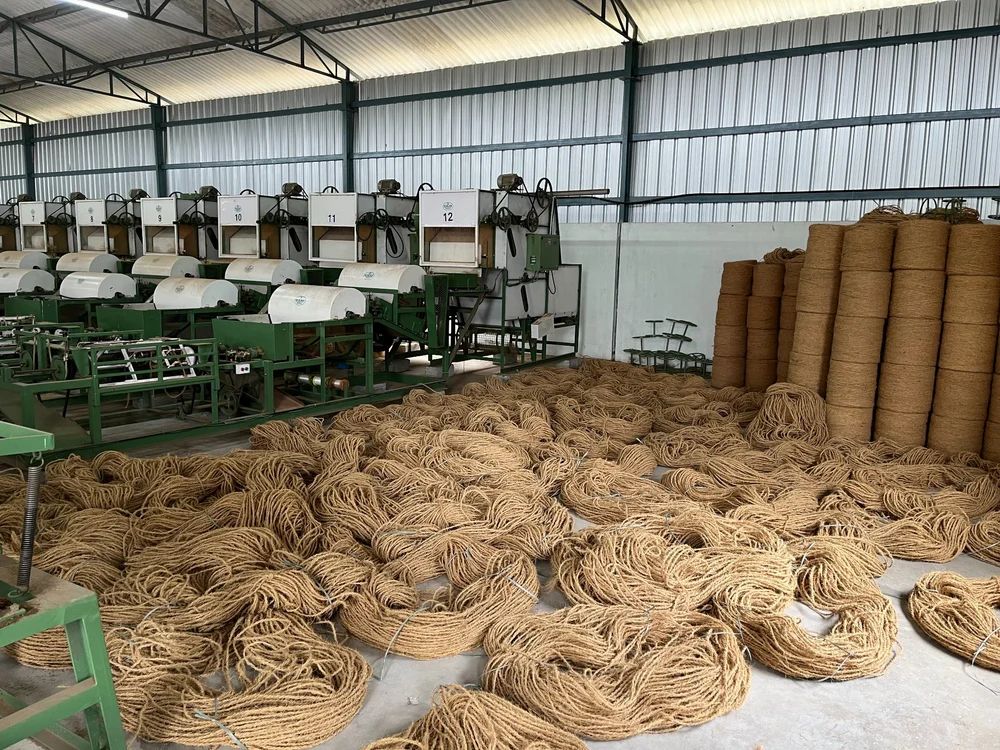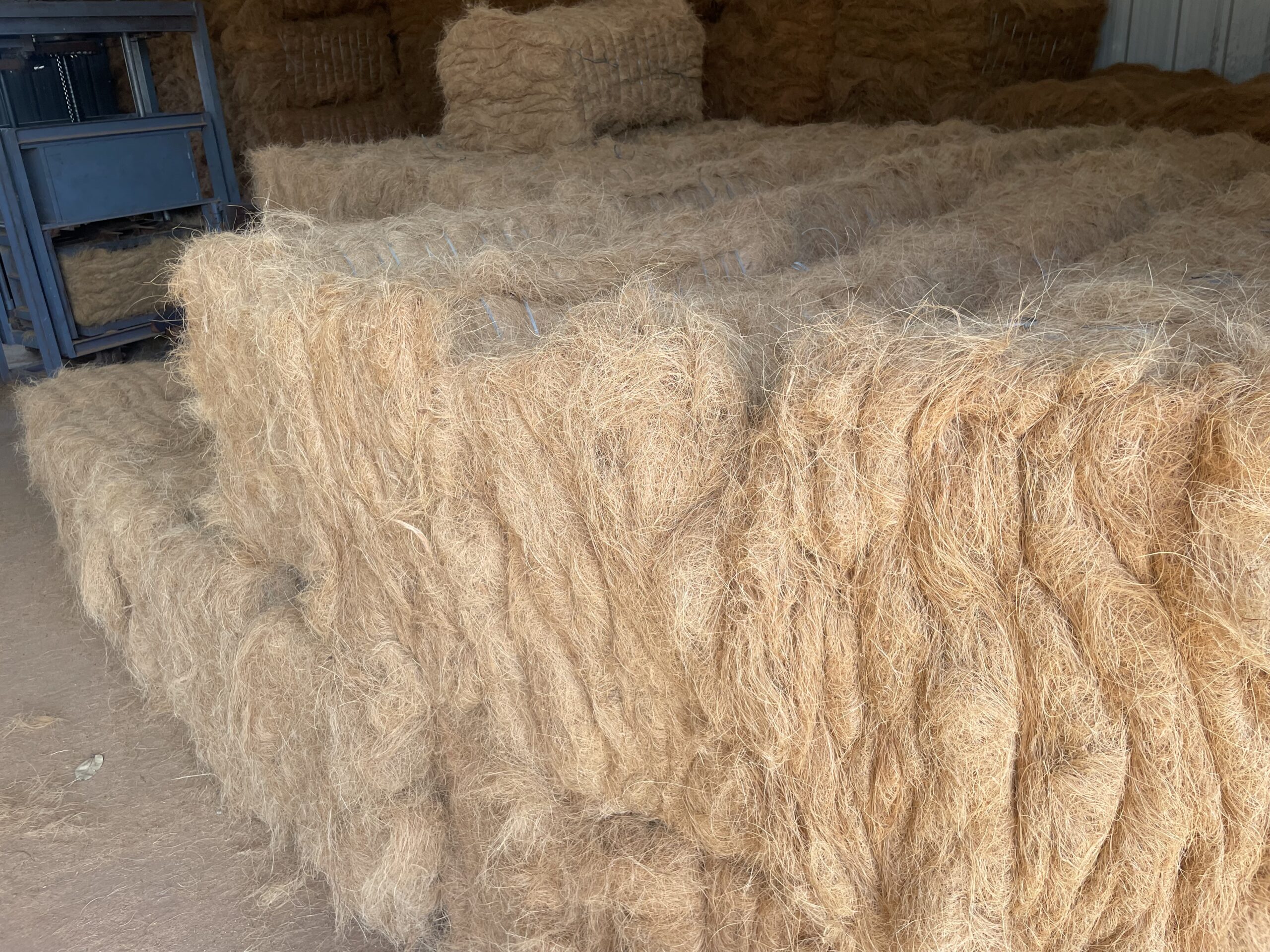Coir, a natural fiber extracted from the husk of coconuts, is known for its robustness, durability, and environmental friendliness. This versatile material is transformed into various products, including coir yarn, coir matting, and coir PVC mats, each serving unique purposes in residential and commercial spaces. This blog post explores the production, benefits, and uses of these coir-based products, highlighting why they are favored in contemporary decor and functional applications.
Coir Yarn: The Foundation of Coir Products
Production: Coir yarn is made by spinning raw coir fibers, which are extracted from between the hard internal shell and the outer coat of a coconut. The fibers are first cleaned and then spun into yarn using traditional spinning wheels or more modern machinery, depending on the desired thickness and quality.
Uses: Coir yarn is incredibly strong and has high abrasion resistance, making it ideal for products that require durability. It is widely used in the making of coir mats, ropes, and fishing nets. Its natural resistance to water and salt makes it particularly useful for marine applications.
Coir Matting: Natural Elegance and Functionality
Production: Coir matting is produced by weaving coir yarn on looms to create a dense, durable fabric. This matting can be cut to various sizes and shapes, making it highly customizable for different uses.
Uses:
- Entrance Matting: Coir matting is commonly used in entryways due to its excellent dirt and moisture-absorbing capabilities, keeping indoor spaces clean and dry.
- Interior Decor: Available in various weaves and patterns, coir matting adds a rustic, natural charm to any room. It can also be dyed or printed with designs to match interior decor themes.
- Commercial Spaces: Its durability makes it suitable for high-traffic areas in hotels, offices, and other commercial settings.
Coir PVC Mats: Enhancing Durability and Aesthetics
Production: Coir PVC mats are made by embedding coir matting into PVC backing. This combination enhances the mat’s durability while maintaining the natural aesthetic of coir on the visible surface.
Benefits:
- Increased Durability: The PVC backing provides extra strength and ensures that the mats retain their shape and structure, even under heavy use.
- Moisture Resistance: While coir naturally absorbs moisture, the PVC backing prevents water from seeping through to the floor underneath, making these mats ideal for use in wet environments.
- Versatility: Coir PVC mats can be used both indoors and outdoors. They are designed to withstand various weather conditions, making them perfect for any setting.
Uses:
- Residential: These mats are commonly placed in kitchens, bathrooms, and balconies, where moisture resistance is essential.
- Commercial: Ideal for entrances and walkways where functionality must meet the need for visual appeal.
Environmental and Economic Benefits
Using coir products offers both environmental and economic benefits. Coir is a natural, renewable material that is biodegradable, reducing environmental impact. The production of coir products provides vital economic support to rural communities in tropical countries, where coconut cultivation is widespread.
Conclusion
Coir yarn, matting, and coir PVC mats represent a blend of tradition and innovation. These products not only provide functional benefits but also promote sustainable living through their natural composition and biodegradability. Whether it’s for home decor, commercial use, or environmental projects, coir products offer a durable, eco-friendly, and aesthetically pleasing option for modern needs. As the world becomes more eco-conscious, coir’s popularity is set to increase, making it a staple in eco-friendly material choices.


